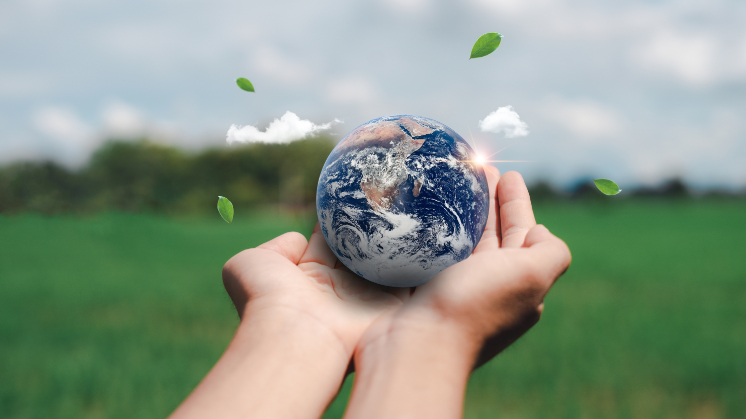International agreements on climate change
Climate negotiations: more than three decades of searching for consensus on the fight against climate change
Over the course of successive Conferences of the Parties — known as COP — new elements have been introduced into the international structure of the negotiations on climate change. These elements allow for specific challenges to be tackled such as mitigation financing, adaptation to climate change, and the technological transfer.


Limiting the global temperature rise to under 2ºC compared to the pre-industrial era is one of the targets.
The United Nations Conference on Environment and Development, held in Rio de Janeiro in 1992, was a reflection of the international consensus when it came to approaching the problem of climate change. During the summit, the United Nations Framework Convention on Climate Change (UNFCCC) was created, which was initially signed by 166 countries and finally came into force on 21 March 1994. As of today, its has been ratified by 197 countries.
From the Kyoto Protocol to the Paris Agreement
The Kyoto Protocol, adopted in 1997 and in force since 2005, can be defined as the implementation of the UNFCCC. At the time, it was the first global commitment to curb global warming and laid the groundwork for future international agreements on climate change. The pact, which a number of countries committed to – including all EU states – went through several key phases and updates:
Both the Kyoto Protocol at the outset and the Paris Agreement, which is currently in force, lay the foundations for achieving global targets. The COPs or Conferences of the Parties act as the decision-making and supervisory body for global commitments based on these agreements. Their relevance is key to achieving progress on the path towards a more sustainable future.
Key milestones of the COPs on climate change
1995 COP 1. Berlin 2017 COP 23. Bonn
1997 COP 3. Kyoto
2007 COP 13. Bali
2009 COP 15. Copenhaguen
2010 COP 16. Cancun
2012 COP 18. Doha
2015 COP 21. París
2016 COP 22. Marrakech
2018 COP 24. Katowice
2019 COP 25. Madrid
2021 COP 26. Glasgow
2022 COP 27. Sharm el-Sheij
2023 COP 28. Dubai
1995 COP 1. Berlin
At the first conference, the signatory countries agree to meet annually to keep global warming under control and warn of the need to reduce emissions of polluting gases.
2017 COP 23. Bonn
It marked a major breakthrough in the talks on the Paris Agreement rules and strengthened civil society partnerships and multi-actor collaborative platforms to promote climate action with the launch of the ‘Talanoa Dialogue’.
1997 COP 3. Kyoto
The Kyoto Protocol is adopted with a commitment to reduce greenhouse gas emissions in industrialised countries.
2007 COP 13. Bali
A timetable is set for negotiations on a new international agreement to replace the Kyoto Protocol and include all countries, not just industrialised countries.
2009 COP 15. Copenhaguen
It sets a goal of keeping global warming below 2°C and developed countries commit to long-term financing for developing countries.
2010 COP 16. Cancun
The Cancun Agreements are drafted, formalising the commitments made in Copenhagen, and the Green Climate Fund is established, especially for climate action in developing countries.
2012 COP 18. Doha
It is agreed to extend the Kyoto Protocol until 2020. Some countries such as the US, China, Russia and Canada did not support the extension.
2015 COP 21. París
The Paris Agreement to keep global warming below 2°C compared to the pre-industrial era and to continue efforts to limit it to 1.5°C is unanimously adopted.
2016 COP 22. Marrakech
The roadmap for the implementation of the Paris Agreement and a framework, the ‘Marrakech Partnership’, that would drive civil society participation in the multilateral climate action process were adopted.
2018 COP 24. Katowice
An important part of the Rulebook or technical framework for implementing the Paris Agreement was agreed and the results of the ‘Talanoa Dialogue’ were presented at the highest level. The rules for the global diagnostic that took place in 2023 at COP28 (Dubai) and that serves as a basis for the review of nationally determined contributions (NDCs) at COP30 in Brazil were also agreed.
2019 COP 25. Madrid
Multilateral discussions around the 1.5°C scenario were consolidated and civil society and government partnerships to mobilise short- and long-term climate action were fostered.
2021 COP 26. Glasgow
It gave rise to the Glasgow Climate Pact, a document containing the guidelines for political action agreed between all countries to keep the 1.5°C scenario alive. It was the platform for important political announcements from countries such as China and the United States as well as from blocs such as the European Union. Messages around the need for a just energy transition were reinforced.
2022 COP 27. Sharm el-Sheij
Progress was made on agreements to address the ‘loss and damage’ suffered by countries that are already suffering the consequences of climate change and have few resources to do so. Messages around a just transition, adaptation and the need to align climate action and biodiversity protection were reinforced.
2023 COP 28. Dubai
A very positive agreement was reached to drive forward the energy transition. For the first time, there is an explicit call to move away from fossil fuels under strict conditions: accelerating climate action in this decade, achieving net zero emissions by 2050 and basing action on science. In addition, a target of tripling renewable capacity and doubling energy efficiency improvements by 2030 was set.
Therefore, the milestones achieved in the COP negotiating process since the first COP was held in 1992 include:
The Paris Agreement up close
The Paris Agreement, adopted on 12 December 2015, is a legally binding pact that contains all the elements necessary to build a global strategy to combat climate change after the Kyoto Protocol expires in 2020. It was a historic milestone, as for the first time both developed and developing countries committed to reducing greenhouse gas emissions to combat climate change.
Here are some of the main issues addressed in the Paris Agreement:
Completion of the implementation of the Paris Agreement has been going on over recent years, one of the main milestones being the approval of the Paris Agreement Rulebook (Katowice Rulebook) during the Katowice Climate Summit (COP 24). This document allows, among other things, the different information and commitments to become operative and be compared like for like; supervision over compliance with the Agreement to be established, global diagnosis methodology to be developed; the matters of adaptation and technology transfer to be stepped up; and negotiations with the aim of obtaining climate finance to be launched.

Climate policies and partnerships
We actively contribute to global action on climate change.

What is the 2030 Agenda
The importance of the 2030 Agenda and the Sustainable Development Goals (SDGs).

Climate change
We are committed to a sustainable energy model.

Climate action
Iberdrola Group is leading the way towards a decarbonised economy.
Iberdrola at the 2024 Climate Conference
COP29, held 11–22 November 2024 in Baku, Azerbaijan, brought together almost 200 countries to reach some landmark agreements. The boost to climate finance stood out, as it was agreed that all actors, both public and private, should contribute $1.3 T by 2035 to developing countries. Of this amount, developed countries are to provide $300 B a year by 2035, three times more than they have so far. In addition, an agreement was reached on the rules for a global market for carbon credit transactions and projects to reduce greenhouse gas emissions.
The Iberdrola Group played an active role in COP29, organising and participating in multiple forums and meetings on key issues for climate action such as renewable and grid deployment, storage, a just transition for people and nature, and green job opportunities for young people.
Ignacio Galán, Executive Chairman of Iberdrola, stressed that the meeting came at the right time to make decisions and adapt infrastructures to the possible consequences of climate change. The CEO supported the COP Presidency's goal of increasing energy storage sixfold by 2030 and expanding electricity grids in line with the scenario to achieve the global goal of net zero emissions. Iberdrola is committed to working with all stakeholders globally to accelerate this energy transformation and climate action.

















